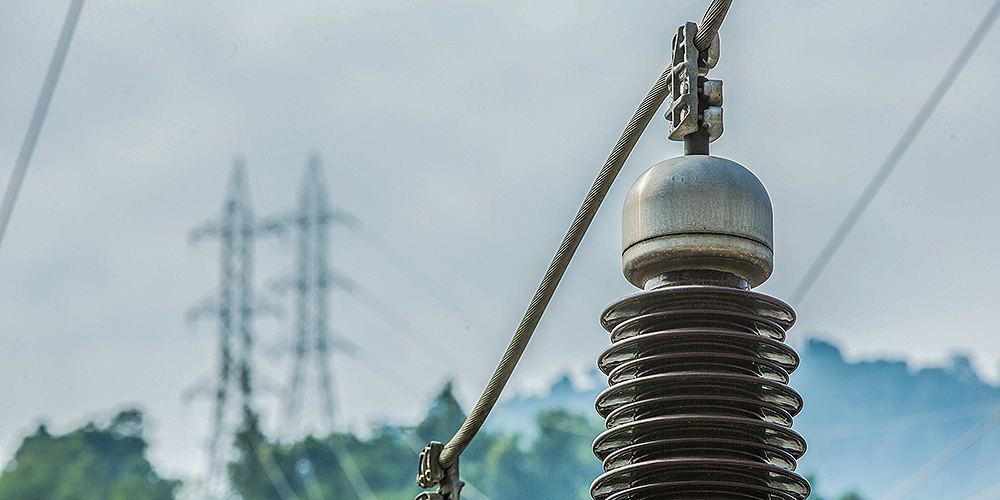East Asia Blog Series
Building Sustainability and Resilience in the Energy Sector
Priyantha Wijayatunga, Migara Jayawardena, Maythiwan Kiatgrajai, and Xiaoming Jin 4 Nov 2021
Strengthen power systems against climate and other risks to minimize damage to infrastructure, disruption of service, and economic loss.
Overview
Continued economic growth and urbanization are projected to almost double energy demand in the Asia and Pacific region by 2030. Securing energy supply for the region involves not only increasing capacity and improving access to affordable and reliable electricity for millions of people but also protecting energy infrastructure from climate-related and other risks.
A webinar organized by ADB in April 2021 discussed approaches and solutions for strengthening infrastructure resilience by incorporating climate and disaster risk considerations into power system planning and design.
Aligning Energy and Climate Strategies
The term “carbon neutral” refers to net-zero carbon dioxide emissions. It means not adding new emissions to the atmosphere, and this can be done by balancing out carbon dioxide (CO2) emissions with their removal (often through carbon offsetting). Carbon peaking, on the other hand, means that CO2 emissions from all sectors in an economy reaches the highest level and then gradually goes down.
Priyantha Wijayatunga, Chief of the Energy Sector Group at ADB, started the session by discussing briefly how the new energy policy of ADB aligns with its strategy for tackling climate change, building climate and disaster resilience, and enhancing environmental sustainability. ADB supports universal access to reliable and affordable energy services, while promoting the low-carbon transition in Asia and the Pacific. The deployment of new and advanced technologies will play a vital role in achieving these objectives.
Strategies and approaches, such as conducting vulnerability assessments, use of multiple scenarios for extreme climate and geophysical events, preparation of emergency and recovery plans, use of smart grids, climate-proofing of infrastructure, diversification of and distribution of energy system, are all important for improving power system resilience. Costs associated with these approaches should also be considered to prioritize resilience investments. For example, burying distribution and transmission lines is a “no regrets” investment, but it is more expensive than overhead lines. The value of climate-proofing needs to be weighed against other options to establish priorities.
Electricity grids of countries in the region are at different stages of development. While most of the developing economies are on track to achieve 100% electrification (or are already there), many of the grids remain underdeveloped and vulnerable to impacts of climate change. With population changes and increasing demand for clean energy, radical transformation of electricity systems is happening or will happen, with more variable-output generation sources, grid-connected energy storage, and behind-the-meter storage as key components of system resilience.
Case Studies
Belize
Migara Jayawardena, Founder and Managing Director of AMALA Clean Energy Advisors, presented the results of a study on power systems in the Caribbean country of Belize, which identifies climate vulnerabilities and solutions to enhance systems resilience to adverse weather and climate change impacts.
Extreme weather events have taken its toll on the country’s economy. For example, Hurricane Dean struck Belize in 2007 and caused a near blackout with more than 88% of customers losing power completely. This resulted not only in foregone revenue from unserved demand for the power sector but also lost valued added of $4.8 million for the national economy.
Jayawardena explained that improving energy resilience requires adopting such measures as long-term energy planning, segmentation of transmission networks, collection and use of meteorological and hydrological data, operational and dispatch capabilities, and systems strengthening of transmission and distribution substations. Measures for rapid response and recovery are equally important to minimize damage and losses. These include emergency response plans, emergency repair access, awareness and communication plan, and recovery and reconstruction plan.
Lao People’s Democratic Republic (Lao PDR)
Maythiwan Kiatgrajai, a renewable energy senior planning and policy specialist at Abt Associates/USAID Clean Power Asia, highlighted the importance of stakeholder engagement in undertaking vulnerability assessment and resilience strategies based on a case study from the Lao PDR.
The vulnerability assessment covered the four main power systems components: generation, transmission, distribution, and consumers. The assessment included identifying threats, defining impacts, assessing vulnerabilities, calculating risks, and developing solutions.
Engaging stakeholders in the process ensures context-specific inputs and buy-in from relevant organizations for implementation. Key success factors include involving relevant stakeholders, the role of experts in facilitating and encouraging discussions among stakeholders, and clearly communicating the objectives and expected outcomes of the study.
People’s Republic of China (PRC)
Xiaoming Jin shared measures taken by China Southern Power Grid to adapt to natural hazards, specifically to minimize impacts from typhoon and ice hazards that commonly affect the system.
The state-owned company covers five southern provinces of the PRC—Guangdong, Guangxi, Yunnan, Guizhou, and Hainan.
Jin, a former chief technical expert of the grid operator’s Electrical Power Research Institute, explained procedures, and technical measures to protect the power grid, including substations and power lines. Measures include pre-risk assessment and pre-control measures, emergency management systems and command platforms, establishment of design standards and guidelines, use of high-level technology for collecting and transmitting real-time information, and refinement of minimum power grid, such as tower reinforcement, upgrade of distribution lines, and use of underground cable.
Key Takeaways
1. The energy sector facilitates economic growth and supports key service sectors that drive the development of a country. Understanding and addressing the sector’s climate vulnerability is critical to inform efforts to improve power sector resilience, minimize damage and disruption, and sustain development.
2. The broader economic impact from unserved energy puts greater emphasis on the need to strengthen the sector’s resilience and to keep the system operating. The longer there is unserved energy, the more financial and economic losses for the economy. These costs should be taken as part of economic evaluation of resilience measures.
3. Enhancing resilience of power systems requires a comprehensive approach that includes strengthening infrastructure, planning and operational capabilities, preventive measures, and emergency response and reconstruction plans. Resilience improvements, such as burying distribution lines, should be viewed as insurance policies that can avoid economic losses caused by grid failure in extreme weather events.
4. Engaging a wide range of stakeholders from policymakers, planners, and system operators ensures in-depth and comprehensive analyses to identify and assess sector vulnerabilities from climate and non-climate hazards. Stakeholder engagement also creates greater buy-in to support implementation of action plans.
References
Asian Development Bank. 2021. Building Resilience of the Power System in the Low-Carbon Transition. Virtual Dialogues on Resilient Infrastructure series (Season 2: Dialogue 3). 28 April.
Author

Priyantha Wijayatunga
Chief of Energy Sector Group, Sustainable Development and Climate Change Department, ADB

Migara Jayawardena
Founder and Managing Director, AMALA Clean Energy Advisors

Maythiwan Kiatgrajai
Senior Renewable Energy Planning and Policy Specialist, Abt Associates/USAID Clean Power Asia

Xiaoming Jin
Former Chief Technical Expert, Electrical Power Research Institute, China Southern Power Grid
This blog is reproduced from Development Asia.


